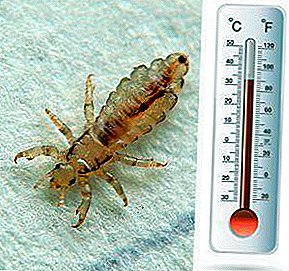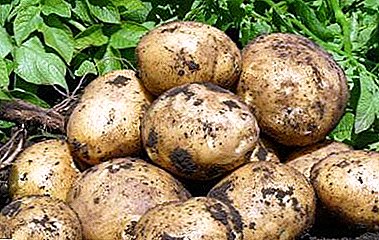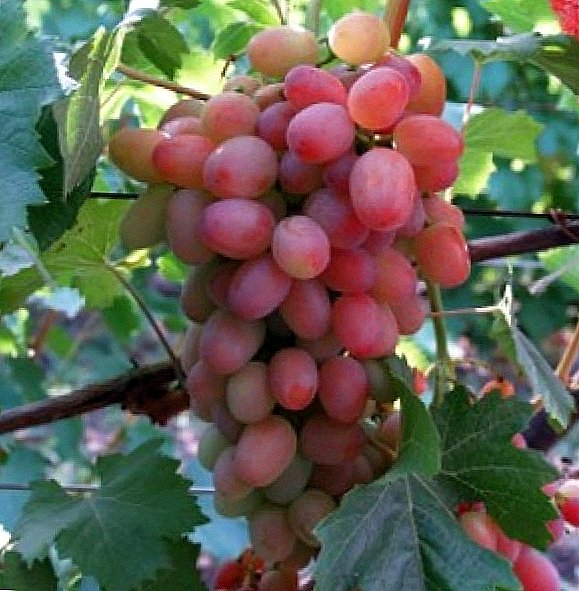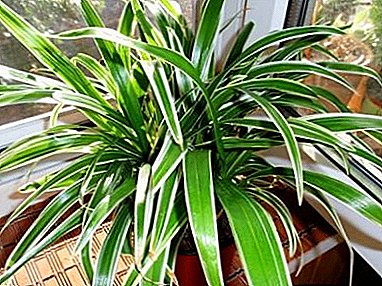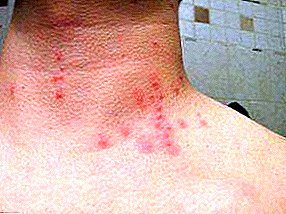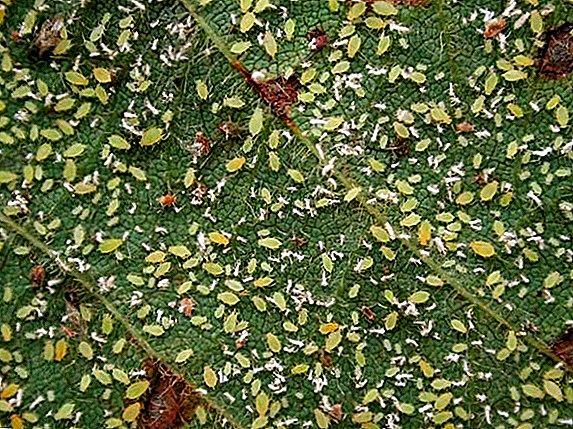 The taste of gooseberry is familiar to many of us since childhood, but the unpleasant "nuances" that are often encountered when harvesting can upset you somewhat: insects all over the bush, white bloom on the fruit or the web between the branches no longer make this plant so popular. However, If you want to get not only healthy, but also an attractive crop, then you should be aware of how to deal with gooseberry pests.
The taste of gooseberry is familiar to many of us since childhood, but the unpleasant "nuances" that are often encountered when harvesting can upset you somewhat: insects all over the bush, white bloom on the fruit or the web between the branches no longer make this plant so popular. However, If you want to get not only healthy, but also an attractive crop, then you should be aware of how to deal with gooseberry pests.
How to deal with gooseberry fodder
 For the gooseberry, the appearance of pests is quite typical and one of the most popular is the fire pest. This small butterfly is very common in our area. The wingspan of this gooseberry pest reaches 3 cm. The butterfly has a gray color, and brown brown stripes are clearly visible on its wings. Appears from the caterpillar, painted in a saturated green color, the pupa of which spends the winter in the upper soil layer.
For the gooseberry, the appearance of pests is quite typical and one of the most popular is the fire pest. This small butterfly is very common in our area. The wingspan of this gooseberry pest reaches 3 cm. The butterfly has a gray color, and brown brown stripes are clearly visible on its wings. Appears from the caterpillar, painted in a saturated green color, the pupa of which spends the winter in the upper soil layer.
The butterfly appears in the spring, during the formation of buds. The female larvae lays in buds and inflorescences, as they grow, they eat out the flesh of the berries, with the result that the fruits do not have time to ripen and dry.
A characteristic sign of "living" ogniye on your plant will be the appearance of a white web. To combat this gooseberry pest, you can use traditional methods and "chemical attack." Effective means in the fight is to dig the soil under a bush, which is held in late autumn and contributes to the destruction of the pupae. A good help for the bush will be the removal of spider nests from branches and inflorescences.
No less effective is the protection of gooseberry with ash solution, applied to the bush during the spring and spring processing. After flowering, the plant can be sprayed with insecticides, for example, carbolite, etafosom, and a bush.
Important!Gardeners unanimously say that it is impossible to treat the plant with insecticides before flowering, however, if your bush is severely affected, then treatment can be done.
Measures to combat sprout aphids on gooseberry
 Shoot aphid is a "clean", small insect of green color and egg-shaped form. The larvae lay their eggs in the bark of young shoots, which winter there. Eggs are black with a glossy shine. These gooseberry pests are born at the time of budding and feed on young leaf petioles. Aphids suck the juice out of the kidneys, as a result of which the leaf dries out and twists. In the first days of summer, a female appears, who "spreads" her young throughout the garden.
Shoot aphid is a "clean", small insect of green color and egg-shaped form. The larvae lay their eggs in the bark of young shoots, which winter there. Eggs are black with a glossy shine. These gooseberry pests are born at the time of budding and feed on young leaf petioles. Aphids suck the juice out of the kidneys, as a result of which the leaf dries out and twists. In the first days of summer, a female appears, who "spreads" her young throughout the garden.
Any gooseberry pests need to be eliminated as soon as possible, therefore, and effective struggle with them provides for an integrated approach to solving the problem:working with folk remedies (hilling, mulching, planting plants with a strong, spicy smell) and by chemical means (can be treated with insecticides BEFORE the appearance of the first leaves and after harvesting). Particularly effective is the "scalding" of the bush with boiling water in the early spring, however, this should be done during the period when there are no frosts.
Did you know?You can fight aphids with the help of ladybugs and afelinus that destroy it.
How to get rid of shitovki on a plant
 Before you start to fight with different pests gooseberry, you need to know how they differ from each other. Our next “guest” is fairly easy to learn, although there are many varieties of it (acacia false guard, comma-shaped shield, willow shield). Shchitovki winter in the damaged bark of the plant, or on the outside of the branch.
Before you start to fight with different pests gooseberry, you need to know how they differ from each other. Our next “guest” is fairly easy to learn, although there are many varieties of it (acacia false guard, comma-shaped shield, willow shield). Shchitovki winter in the damaged bark of the plant, or on the outside of the branch.
The very body of the insect is under the "protection" of the shield, which can be from yellow-brown to red-brown, oval or convex in shape. This is quite a small pest, The size of the calf is not more than 4.5 mm. The female lays eggs (usually in spring), and she dies. During the month, the eggs are "in the shelter", then glued to the branches and young shoots.
Shchitovki suck the juice from the branches and shoots, as a result of which they weaken and dry out. To combat the shield shoots that are already damaged can be cut. Besides, it is useful to use the available drug DNOC, delivered in liquid form, in the ratio of 100 grams of the drug to 10 liters of water. You can moisten gooseberry branches with nitrafen or use one of the “grandmother's tools” - whitening the branches with hydrated lime.
Important!Treatment of pests gooseberry should be up to the point whenwake upthe kidneys.
Gooseberry sawfly: description and methods of control

Very often on the gooseberry bushes can be seen tiny insect, painted in red and black or yellow, with a look similar to a fly. It is very dangerous for the sheets, because it is on the area of the sheet that the adults lay eggs. Caterpillars of white and yellow color can destroy the entire leaf in a few days. Sawflies are of two types: yellow gooseberry and pale-legged gooseberry. They differ only in color: the first - yellow - red; the second is reddish black.
The larvae of this insect winter in cocoons in the upper layers of the soil under the bush, and pupate with the first warming. Then There are butterflies that are able to lay up to 150 (!) eggs per season. Caterpillars are born within ten days and have 20 legs.
Did you know?Over the summer, 3-4 generations of sawflies can form on your plot, so you should start fighting this insect from the moment you notice it.In the fight against this pest of gooseberry, you can use two methods: manual collection of insects from the plant and loosening the soil under a bush, with the mandatory collection of fallen leaves before wintering. Treatment with insecticides should be carried out in two stages: the first - from the moment of bud break and to budding; the second - immediately after flowering. The third stage is carried out as needed, after harvesting.
How to deal with gooseberry moth
 Yellowish caterpillar with rectangular brown spots on the back and yellow stripes on the sides (the insect is quite large - up to 4 cm). It moves along the “loop” course, in a way of pulling up your body. If you have noticed this insect on your bush - you know, the gooseberry moth will soon appear - one of the most common gooseberry pests.
Yellowish caterpillar with rectangular brown spots on the back and yellow stripes on the sides (the insect is quite large - up to 4 cm). It moves along the “loop” course, in a way of pulling up your body. If you have noticed this insect on your bush - you know, the gooseberry moth will soon appear - one of the most common gooseberry pests.
This insect hibernates "warm" in cocoons that are stored under the remnants of leaves. Larvae hatch in spring; butterfly, up to 5 cm in size, has a pale gray-brown color with dark brown specks on its wings. In the summer, she lays eggs on the inside of the leaf. The "principle of operation" of the moth is the same as that of the sawfly - eating and killing sheets.
For the fight and suitable folk remedies and chemicals. The process of treatment with insecticides takes place in three stages, as in the fight with the sawfly. Folk remedies for treating the bush from the moth provide for pouring boiling water over the bite area, and to destroy the larvae, shake them manually, and then treat the bush with various bactericidal preparations.
Important! For additional protection of the bush, you can spud it before hibernation, but do not forget (!) To break up the spring.
How to rid the gooseberry spider mite
 The first signs of the appearance of spider mites (including gooseberries) can be seen in May, although the plant begins to "suffer" from it already in early spring. The spider mite lives on the inner side of the leaf and braids it with a white spider web. This small, sucking insect, up to 0.4 mm in size, manifests itself as the formation of white small dots on the leaves, after which they become "marble" and dry out.
The first signs of the appearance of spider mites (including gooseberries) can be seen in May, although the plant begins to "suffer" from it already in early spring. The spider mite lives on the inner side of the leaf and braids it with a white spider web. This small, sucking insect, up to 0.4 mm in size, manifests itself as the formation of white small dots on the leaves, after which they become "marble" and dry out.
Females of ticks overwinter in the soil, under the rests of leaves. Very often ticks multiply on weeds, and then "move" to the bushes. Work on the destruction of this pest gooseberry must begin before the formation of buds, then you can spend spraying acaricides (vofatoks, colonoid sulfur, etc.)
Did you know?Sulfur-based treatment is one of the most popular options for controlling insects, however, its effectiveness is slightly lower and, moreover, the substance can cause burns on the plant.Popular methods of dealing with spider mites are: collecting fallen leaves, spraying in dry weather with water, watering the bush with a solution of potassium permanganate (boiling water should be used) spraying infusion of onion peel (need to insist 2 days).
Gooseberry pest control, folk recipes
 Folk ("grandmother's" recipes) will forever remain the most popular solution to the problems of gardeners, because they are the most accessible and always at hand. For example, very popular is planting next to the bush "odorous" plants, such as tomatoes, parsley root, etc. Also You can use a soap solution: 300 grams of soap for 10 liters of water.
Folk ("grandmother's" recipes) will forever remain the most popular solution to the problems of gardeners, because they are the most accessible and always at hand. For example, very popular is planting next to the bush "odorous" plants, such as tomatoes, parsley root, etc. Also You can use a soap solution: 300 grams of soap for 10 liters of water.
In the fight against aphids, the caterpillar is very wide Sarepta mustard is used: 10 liters of water take no more than 100 grams of powder, stirring it first in a small amount of water, and then adding to the bulk of the liquid. In the fight with the shield and aphids is often used tobacco tincture (one kilogram of natural tobacco is drawn in 10 liters of water and the gooseberries are sprayed with this solution for 5-7 days). Very often, for additional disinfection of the bush stem, use hydrated lime.
As you see any of these gooseberry pests can easily be found in the garage / storeroom / shed or, no problem to buy in the store. This will help you in the care of the bush and improve its frost resistance and yield.


